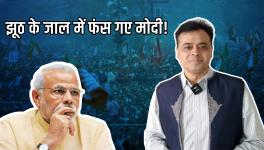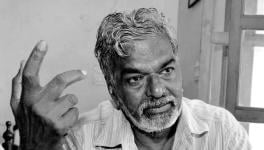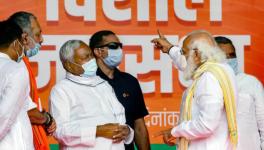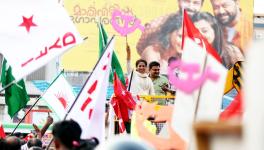Taking Constitutional Values to the Grassroots
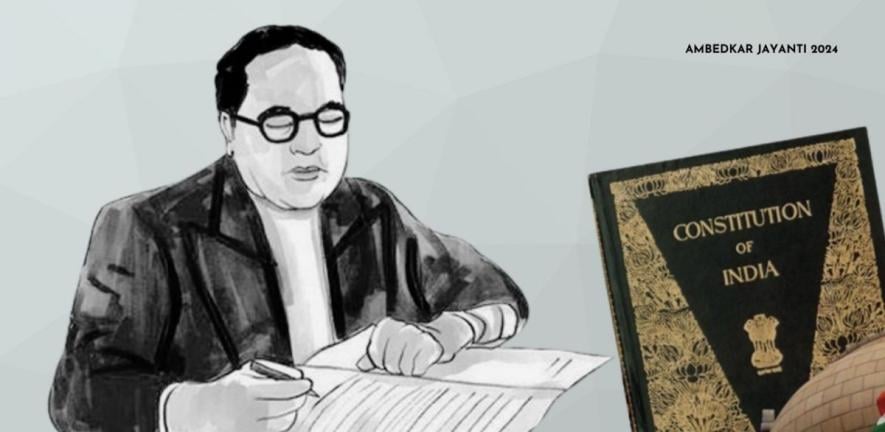
Representational Image.
I come from Panchgani, where my father was a cobbler. I came to Mumbai for higher studies in the 1970s and was soon faced with two streams of thought and action— on one side Ambedkarism and on the other side Marxism.
At the time, there was a vibrant, militant student movement in Mumbai post-Emergency and I came in contact with people from different Left-leaning student organisations and a street-play group called Aavhaan Natya Manch.
Most of these students were from privileged backgrounds but I found them to be completely honest. They did not shrink from making sacrifices for the causes in which they believed. During my association with them, I discovered the vastness of the world, how it works and who runs it.
I stayed in Siddharth Vihar, the famous students’ hostel attached to Ambedkar College at Wadala in Central Mumbai, the nerve centre of Dalit politics at that time.
At the time, there was a vibrant, militant student movement in Mumbai post-Emergency and I came in contact with people from different Left-leaning student organisations and a street play group called Aavhaan Natya Manch.
In my early days at Siddharth Vihar, I experienced the power of revolt— because those were the heydays of the Dalit Panthers. But I witnessed the movement fizzle out.
By then, I had started reading the works of Dr B.R. Ambedkar and I felt that the Dalit Panthers were not following Ambedkar, they were not on track. On the other hand, I started reading Karl Marx, Friedrich Engels, Vladimir Lenin, Mao Zedong and other such writers and came to realise that the way Indian Marxists were working, they too were not on track.
So that was my problem and at that time, I did not have clarity as to what I should do personally. I spent about 16 years in this dilemma! But those 16 years taught me Marx and Ambedkar; taught me how to fight, and against and for whom to fight. I found that there existed no real mass movement and no ideological clarity in India.
At this juncture, my comrades taught me theatre. They taught me how to write songs, and how to go to the masses and learn from them. They taught me the power of a cultural movement and cultural politics. But I found no organisational alternative for myself.
There were a lot of organisations around me, but I was not a politician as such so I was stuck in this situation for a long time.
Then I thought I must go to the masses. The one section of the masses with whom I had a direct connection with were the Ambedkarite masses. I knew that there are other sections of the people— such as the Other Backward Classes (OBCs) and the Adivasis, who are also at the bottom of Indian society— but I thought I would start with the mass I know best. So, I decided to start the Ambedkari jalsa. My experience in street theatre helped me in this effort.
In my early days at Siddharth Vihar, I experienced the power of revolt— because those were the heydays of the Dalit Panthers. But I witnessed the movement fizzle out.
In the movement, my poetry and music got space to grow. I got encouragement from my comrades. I applied my Marxist understanding to Ambedkar, and Ambedkarite depth to Marxist work.
The Ambedkarite movement was in the throes of political and cultural regeneration. The form of jalsa was pioneered by Mahatma Jotirao Phule and he used it in his propaganda against the Peshwai. The tamasha is another popular folk form of Maharashtra and, at the time of the Chavdar Tank Satyagraha at Mahad in 1927 led by Babasaheb, a whole lot of tamasha troupes joined in and they came up with a new form of cultural propaganda which subsequently came to be known as the Ambedkari jalsa.
This form has a ‘maushi’ (a caring aunt who, unlike in the traditional form of the tamasha fights exploitation and superstition), who represents the people and there is a sutradhar (the narrator of the play), who represents Ambedkarite thought.
So, I decided to adopt this form, with a few modifications. In the earlier days, the sutradhar was always played by a man. I wondered why should the sutradhar always be a man, I thought of casting a woman to play that role.
Similarly, I wondered why the innocent masses should always be represented by a woman. So, I started casting a man as the maushi (of course, he would wear women’s clothing).
People’s response to this form of jalsa was overwhelming. They had been waiting for something like this, the comeback of the jalsa that had been started at the instance of Babasaheb years ago and which had fallen into disuse. I called my efforts the ‘Vidrohi’ Ambedkari jalsa (Rebel Ambedkarite cultural programme).
At this juncture, my comrades taught me theatre. They taught me how to write songs, and how to go to the masses and learn from them.
Our jalsa was centred around what position Ambedkar would have taken on contemporary issues if he were alive today. So, we spoke and sang not only about caste but about other key issues— imperialism, capitalism and caste.
We ceased the practice of worshipping Ambedkar— Ambedkar bhakti. Our first such song was, “Majha Bhim malaa bhet to ga baai”. (We don’t sing bhajans to Ambedkar, we understand his ideology.)
By this, we mean the emphasis should not be on what Babasaheb said in his day long ago, but on what he would have said about the issues of today if he were alive.
Our jalsa received a tremendous response, especially from womenfolk. They flock around me after the programme and ask for a programme of action— what they should do to remedy a particular situation. This work is now in its fifth year.
When we addressed our audience, we would say: “We are not here to entertain, we are here to disturb you… Because the function of the artist is to disturb. We are not merely singers; we don’t sing songs, we sing thoughts.” This was something radically new for the people.
Further, we would get some money from the organisers of these programmes for our travel and other expenses, but beyond that, we never made an appeal to the audience for money.
This was a different practice for the people. Also, we refused to take the names of the political bigwigs of the area while offering our thanks for the programme— which is the norm— instead, we would say that all politicians are rogues, including those who might have organised our jalsa!
In my understanding, the demolition of the Babri Masjid was a major turning point in our lives. Till then, people generally did not think very much about our Constitution and the rights it sought to guarantee.
In the movement, my poetry and music got space to grow. I got encouragement from my comrades. I applied my Marxist understanding to Ambedkar, and Ambedkarite depth to Marxist work.
But, to me, it became clear that the attack on the Babri Masjid was not just an attack on a religious structure of the minority by Hindutva fascists, but amounted to an attack on the Constitution itself.
So I started writing songs defending the Constitution. At this juncture, my leftist friends criticised me, saying you are trying to escape the repression of the State by resorting to upholding the Constitution, but I kept on with my work … and got a resounding response from the Ambedkarite masses.
When the Gujarat pogroms against Muslims occurred in 2002, I sensed that fascism was going to rise in our country and the first casualty would be our Constitution. And when the BJP came to power at the Union level in 2014, I knew that I would have to take the message of defending the Constitution to each and every home.
But I had no organisation around me. I could go on singing all my life but then I would reach only those who came to my performances. So I started going to the bastis where the working class lives… even in places where I had no contacts.
Soon I found that in every basti I visited, there would be at least one person who knew me from the jalsas I used to perform. This encouraged me. Soon I started a Sanvidhaan Sanvardhan Samiti (Committee for the Protection of the Constitution) in Ambarnath (a suburban township outside Mumbai).
I found that the youth of today are clueless and go astray because they have not been imbued with democratic values. Some of them may be earning well, but they do not have a good life.
So, I felt that they need training of an ideological kind. They need to be trained in internalising our constitutional value system, which is contained in the Preamble. The values of democracy, equality, freedom of thought and action, fraternity and secularism.
There are 21 principles embedded in the Preamble and I resolved to teach these principles to the youth. But in what manner was I to do this? I did not want to go to the people like some government bureaucrat and set up classes, etc.
So, I kept trying to come up with a unique way to do this. I armed every one of my activists with a bundle of agarbattis (incense sticks). The activist would go to a home, ask where the symbol of their god was and light an agarbatti next to such a deity. Then the activist would approach the head of that household, explain to them that they had come to campaign for the Constitution and ask for their aashirwaad (blessings) for this work.
Our jalsa was centred around what position Ambedkar would have taken on contemporary issues if he were alive today. So, we spoke and sang not only about caste but about other key issues— imperialism, capitalism and caste.
Then the activist used to request the head of the household to ask all the members of that household to sit with him for a few minutes so that he could explain to all of them his mission.
I had instructed the activists not to ask for anything from these people apart from water to drink. We found that most people knew nothing about the Constitution.
This prompted us to carry out a survey. We took a camera and went out into the streets of Mumbai. We asked people on the street at random whether they knew what the Constitution was. We found that 94 percent of the people we approached knew nothing about the Constitution— what it was and what it says.
This is how our activists introduce the concept of the Constitution of India on the first visit to the people’s homes. Then we tell them that we will explain what the Constitution contains and what it stands for on our next visit and take down their phone numbers.
Just as every religion has some customary rituals, such as fasting on certain days, or not eating non-vegetarian meals on some other days, so also our activists have a ritual we are pledged to observe: we do not eat dinner every day till we have visited at least one home to talk about the Constitution!
Whether they are engaged in a business or a job, the activist is pledged to visit one home every day as part of our campaign.
On the second visit to a home, the activist talks about the Preamble. At the end of this session, the activist says: “Now, I would like to share with you the 21 principles embedded in the Preamble, but this will not be explained to you at home, you will have to come to a class to understand it.”
We started these classes first in a Buddha vihar in a chawl in Ambarnath in early 2018. We used to hold these classes every Sunday and the activists would call up people whose homes they had visited and invite them for these classes.
Sometimes 40 people came, sometimes 50. At that time, 15 activists had volunteered for this campaign. It was mostly women who came for these classes, and this was a departure from the norm.
In the Ambedkarite movement, it is noticed that if there is a task to be done relating to politics, then men will be in the forefront, but if the task relates to dhamma (worship), then women will do it. But where defending the Constitution was concerned, there was a change … women came forward in larger numbers than men.
Thereafter, the women also started the work of talking to their acquaintances about defending the Constitution and came in large numbers to attend the Sunday class.
The attack on the Babri Masjid was not just an attack on a religious structure of the minority by Hindutva fascists, but amounted to an attack on the Constitution itself.
This work continued till 2019. Then I felt that we were not taking our message to children, and more than that, to the children of all castes. But the general mentality is such that if you talk of the Constitution, the public thinks you are from the ‘Jai Bhim’ fraternity, and they tend to stay away. That is when we decided to start our ‘Maanuski chi Shaala’ (School of Humanity).
We tried to use different forms to teach the youngsters. The class would start with the raising of the Indian national flag. Then we would teach the constitutional values through games, stories, experiments and songs.
For example, we got them to play kabaddi, saying this game teaches you about democracy … two parties play each other, one triumphs over the other, but does not finish off the other.
Democracy means you cannot and should not eliminate your opponents, you cannot finish them off. Or take the game of kho-kho … in that by coordinating with each other the team members of one team can ‘catch’ members of the other team and eliminate them from the game.
Kho-kho teaches us that you cannot succeed alone, only with the assistance of others. We teach about the importance of unity, how to unite beyond the barriers of religion, caste, colour and language.
The womenfolk were very happy with these schools of humanity that they used to come to the classes bearing homemade sweets and snacks for the teachers and for me. They took much interest in these efforts, and then demanded that we open a Maanuski chi Shaala for adults too! But the Covid pandemic came and put a spoke in our wheel.
I found that the youth of today are clueless and go astray because they have not been imbued with democratic values. Some of them may be earning well, but they do not have a good life.
But after a few months of the lockdown, we decided to shift our Manuski chi Shaala online. So we put messages on Facebook, Instagram and WhatsApp, asking people to contact us if they wanted to join the Manuski chi shaala online.
We got a tremendous response which was beyond our expectations: 20,000 people responded that they wanted to join! So we started the shaala online. This was a great success, but once normal life resumed it was very difficult to restart the offline shaala.
We noticed that after Covid, people are not ready to go to a meeting even a few floors down in the building where they live, but they will attend if it is online. Anyway, what we did do thereafter was continue the shaala online but set up some libraries offline in some places.
But now we have resolved to start a YouTube Channel called ‘Lokshahir’ (People’s Balladeer) which will be inaugurated on Ambedkar Jayanti, 2024. We have already recorded five songs for this channel.
This channel will centre around cultural politics, as cultural politics is the answer. Without cultural forms, purely political forms are now dead.
Sambhaji Bhagat is the most widely known Lokshahir of Maharashtra and is an enormously talented author, poet and music director.
Get the latest reports & analysis with people's perspective on Protests, movements & deep analytical videos, discussions of the current affairs in your Telegram app. Subscribe to NewsClick's Telegram channel & get Real-Time updates on stories, as they get published on our website.









